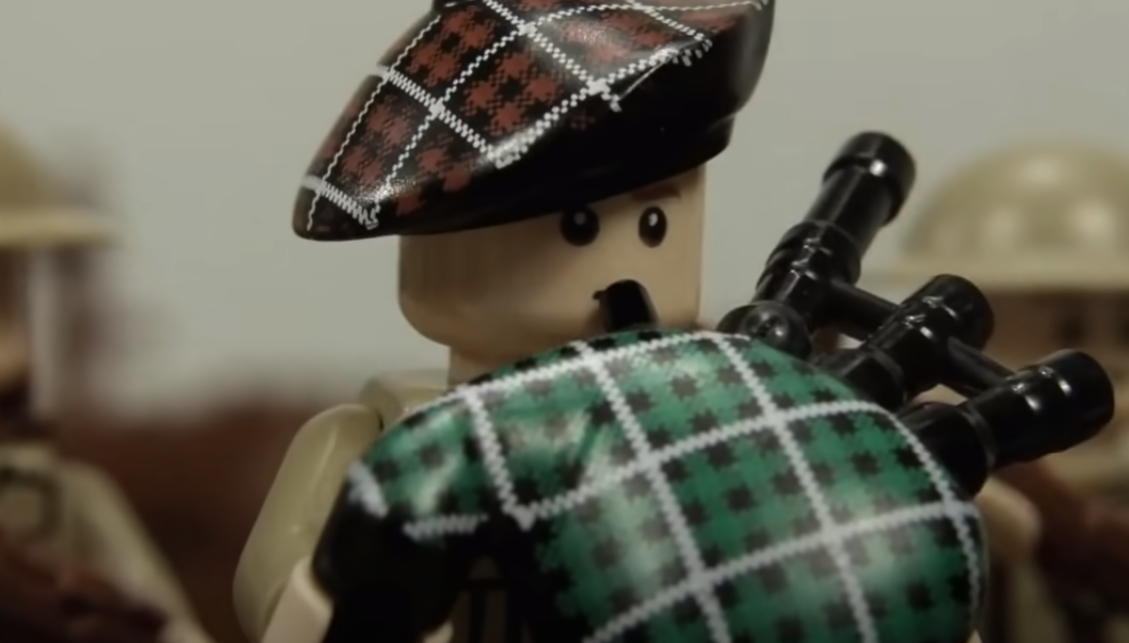
10 Battle Turning Points: Lego Reenactment
History Overview of Each Segment of the Video:
D-Day Battle for Omaha Beach (WWII)
03:59 Battle of the Somme (WWI)
08:42 Battle of Rorke’s Drift (Anglo-Zulu War)
12:26 Battle of Trenton (American Revolutionary War)
15:43 Battle of Shiloh (American Civil War)
18:37 Battle of Svolder
21:46 Battle of New Orleans (War of 1812)
24:35 Battle of Otumba
27:14 Battle of Villers Bretonneux (WWI)
31:07 Battle of Saragarhi
1. D-Day Battle for Omaha Beach (WWII) – The D-Day Battle for Omaha Beach occurred on June 6, 1944, during World War II, as part of the larger Allied invasion of Normandy, codenamed Operation Neptune. Omaha Beach was one of the five landing beaches where American forces, predominantly the 1st and 29th Infantry Divisions, faced heavily fortified German defenses. The landing at Omaha Beach was met with intense resistance from the German forces, resulting in high casualties and a challenging start to the Normandy invasion. Despite facing significant obstacles, the Allied forces eventually secured the beachhead, marking a crucial turning point in the war and leading to the eventual liberation of Europe from Nazi occupation.
2. Battle of the Somme (WWI) – The Battle of the Somme was a major offensive launched by the British and French forces against the German army on the Western Front during World War I. The battle began on July 1, 1916, and lasted until November 18, 1916. It was characterized by extensive trench warfare and heavy casualties. The British forces, in particular, suffered a devastating loss on the first day of the battle. The Somme offensive aimed to relieve pressure on the French forces at Verdun and break through the German lines. Although the battle resulted in territorial gains, the cost in human lives was staggering, with over one million casualties on all sides.
3. Battle of Rorke’s Drift (Anglo-Zulu War) – The Battle of Rorke’s Drift took place on January 22-23, 1879, during the Anglo-Zulu War between the British Empire and the Zulu Kingdom. After the British suffered a defeat at the Battle of Isandlwana, a small British garrison at Rorke’s Drift, a mission station, was besieged by a large Zulu force. Despite being significantly outnumbered, the British defenders, led by Lieutenant John Chard and Lieutenant Gonville Bromhead, successfully repelled the Zulu attacks, earning them enduring fame and recognition for their bravery. The Battle of Rorke’s Drift became a symbol of British heroism and resilience during the Anglo-Zulu War.
4. Battle of Trenton (American Revolutionary War) – The Battle of Trenton took place on December 26, 1776, during the American Revolutionary War. It was a critical victory for the Continental Army, commanded by General George Washington, and marked a significant turning point in the war. On the night of December 25, Washington led a daring crossing of the ice-filled Delaware River and surprised the Hessian troops, who were celebrating Christmas, in Trenton, New Jersey. The swift and successful attack resulted in the capture of over 900 Hessians and boosted the morale of the Continental Army, inspiring more enlistments and support for the revolutionary cause.
5. Battle of Shiloh (American Civil War) – The Battle of Shiloh, fought on April 6-7, 1862, near Pittsburg Landing in Tennessee, was one of the bloodiest engagements of the American Civil War. It was a major battle in the Western Theater and a significant early clash in the war. The Confederate forces, under General Albert Sidney Johnston, launched a surprise attack on the Union forces, commanded by General Ulysses S. Grant. The intense fighting and high casualties demonstrated the brutality and ferocity of the Civil War, but ultimately resulted in a Union victory. The Battle of Shiloh proved that the war would be long and costly, leading to a deeper commitment by both sides to achieve their objectives.
6. Battle of Svolder – The Battle of Svolder was a naval engagement that occurred in the Baltic Sea in the year 1000 AD. It involved three Scandinavian powers: the Norwegian King Olaf Tryggvason, the Swedish King Olof Skötkonung, and the Danish King Sweyn Forkbeard. Sweyn Forkbeard, with the help of his son King Cnut the Great, defeated the Norwegian and Swedish fleets, resulting in a significant shift in power and influence in the region. The battle is notable for its impact on the balance of power among the Scandinavian kingdoms during the Viking Age.
7. Battle of New Orleans (War of 1812) – The Battle of New Orleans took place on January 8, 1815, during the War of 1812 between the United States and the British Empire. It was a decisive American victory led by General Andrew Jackson. The British attempted to capture the strategic port city of New Orleans but were met with strong resistance from the American forces and suffered heavy casualties. The Battle of New Orleans, though fought after the peace treaty ending the war was signed, became a symbol of American patriotism and bolstered national pride.
8. Battle of Otumba – The Battle of Otumba occurred on July 7, 1520, during the Spanish conquest of the Aztec Empire. The conquistador Hernán Cortés and his Spanish forces, along with their indigenous allies, were fleeing from Tenochtitlan (now Mexico City) after a failed attempt to capture the Aztec emperor, Moctezuma II. The Aztecs pursued the retreating Spanish and engaged them in battle at Otumba. Despite being heavily outnumbered, the Spanish forces managed to defeat the Aztecs, securing their escape from the Aztec capital.
9. Battle of Villers Bretonneux (WWI) – The Battle of Villers Bretonneux took place during World War I as part of the German Spring Offensive in 1918. It was a significant battle in the larger campaign on the Western Front. The Australian Corps played a crucial role in defending the French town of Villers-Bretonneux from German forces. The battle marked a turning point in the German offensive and helped to halt their advance towards the strategic city of Amiens. The Australian contribution to the victory further solidified their reputation as formidable soldiers during the war.
10. Battle of Saragarhi – The Battle of Saragarhi occurred on September 12, 1897, in the North-West Frontier Province (now Khyber Pakhtunkhwa, Pakistan) during the British Raj. It involved 21 soldiers of the 36th Sikh Regiment of the British Indian Army, defending a communications post against thousands of Afghan tribesmen. Despite being heavily outnumbered, the Sikh soldiers courageously held their ground, inflicting heavy casualties on the enemy. Their bravery and sacrifice in the face of overwhelming odds earned them enduring respect and admiration.
Conclusion
The segments of the video cover various historical battles from different time periods and conflicts, highlighting moments of heroism, strategic brilliance, and significant turning points in world. Enjoy.

